Paul László pioneered California Modern in the Golden Age of Hollywood
California Dreamin'
-
The Loewendahl house by Paul László
Photo © J. Paul Getty Trust. Used with permission. Julius Shulman Photography Archive, Research Library at the Getty Research Institute</em>
-
Paul László
Photo © PeterLaszlo / Wikimedia Commons
-
Model for the László house, 1937
Photo © Architecture and Design Collection, Art, Design & Architecture Museum, UC Santa Barbara
-
Orbach Apartment, designed by Paul Laszlo
Photo © Ezra Stoller / Esto
-
The home of Julius Epstein
Photo © Robert Cleveland Collection, UCR / California Museum of Photography, University of California, Riverside
-
The shoe salon inside the Bullock's Wilshire department store, 1937
Photo © Isham Robinson / Architecture and Design Collection, Art, Design & Architecture Museum, UC Santa Barbara
-
Atomville sketch by Paul László
Photo © Architecture and Design Collection, Art, Design & Architecture Museum, UC Santa Barbara
-
1948 furniture line by Paul László for Herman Miller
Courtesy of Herman Miller
-
László designs in the 1948 Herman Miller catalogue
Courtesy of Herman Miller
-
Dalí table by Paul László
Source: Wikimedia Commons
-
Set of dining chairs by Paul László
Photo © Wright Auction House
-
Custom console by Paul László
Photo © Wright Auction House
-
Lounge chairs and ottoman by Paul László, auctioned by Wright in 2012
Photo © Wright Auction House
In 1936, Hungarian-born architect-designer Paul László fled an increasingly volatile Europe for Los Angeles. He spoke barely a lick of English at the time, but his talent for creating modern yet sumptuous environments put him on a fast track to the American dream. Almost immediately upon arrival in the U.S., he began receiving commissions from the expanding clique of celebrities, moguls, and socialites in Beverly Hills and beyond. Within twenty years, he boasted a string of high-profile showplaces and $1.5 million in annual business. Esteemed architectural photographers like Julius Shulman, Robert Cleveland, and Ezra Stoller counted themselves among his many admirers and lined up to capture his era-defining work. László, a perfectionist and champion of luxury and beauty, found his calling in the style-loving frontier land of 1930s-1960s California.
Born in 1900 to a middle class family of furniture manufacturers, László grew up surrounded by culture, with parents dedicated to exposing their children to music and art. But his passion for design did not surface until he was fourteen years old, when he spent a year studying in Vienna and became transfixed by the city’s beauty. After the First World War—he served with the Hungarian army on the Italian front—his parents encouraged him to pursue his interest in design. He completed his studies in Stuttgart and an apprenticeship in Cologne; by 1923, he returned to Vienna to set up his own firm. Four years later he moved the practice to Stuttgart—the heart of modernist discourse at the time—and began to make a name for himself both locally and abroad. Rumors of László’s talent spread across the Atlantic, and American designers like George Nelson pilgrimaged to his studio.
Despite his success, the growing Nazi presence in Germany compelled László—of Jewish ancestry—to start over in the Unites States. Determined to leave the dark days of persecution behind, he embraced his adopted home, once explaining, “From the first day on, it was a love affair.” László landed in New York and drove across the country with a friend, exploring its design marvels along the way: the Ford headquarters in Buffalo; Grand Rapids’ major furniture manufacturers; Chicago’s storied skyscrapers; the Hoover Dam, then under-construction, near Las Vegas; and finally sunny, booming, forward-facing Los Angeles.
While László’s cross-country tour exposed him to the possibilities available in the U.S., it was his chance encounter with a couple over breakfast at the newly built Hampshire House back in New York that secured his future success. The new acquaintances contacted a friend in Los Angeles, Walter Loewendahl Jr., who spoke German, to tell him about László’s impending arrival on the West Coast. Within a few days of settling into his Beverly Hills apartment, László received a call from Loewendahl asking him to design a shoe salon for his father’s downtown store.
Buoyed by the reputation László had earned in Europe, high-end commissions soon began rolling in one after another. He designed fashionable houses for Cary Grant, Barbara Stanwyck, Ronald Reagan, Barbara Hutton, director William Wyler, Texas oil baron Charles McGaha, producer William Perlberg, and many other wealthy patrons; commercial projects, including one of the first modern-style, glass-fronted storefronts on Wilshire Boulevard as well as Bullock’s Wilshire and Beverly Hills Saks Fifth Avenue; casinos, banks, theaters, country clubs, a race track, and hospitals. In 1952, Time magazine dubbed him the “rich man’s architect,” and proclaimed his sovereignty over the luxury market. Looking back on his career, he later said, “I was always busy. I never had an empty period.”
In the years bookending World War II, László—along with several other talented European immigrants and their American protégés, such as Charles and Ray Eames—played a prominent role in introducing modernist principles to the West Coast. Under the balmy California skies, however, the movement’s functionalist severity relaxed as designs became warmer, more colorful, and more elegant. A style known as “California Modern” emerged, with a focus on comfort, beauty, flair, and convenience. This aesthetic, in turn, spread back across the U.S. and over to Europe, setting the tone for design in postwar era. For László’s part, he mixed sleek lines and novel materials with touches of traditionalism, such as floral fabrics. His simple, geometric forms are tempered by rich woods and ornate textures, like a faux basket weave on a wooden desk or a diamond pattern on a Lucite table. He never shied away from pops of color, which he cited as a major draw for many clients. He dabbled with whimsical flourishes, such as a fish-shaped table surrounded by curved, solid wood benches with a teakwood finish and cushions upholstered in bright yellow. He has said of this modernism-lite: “It has, I believe, a certain charm, which is missing [in] some other modern people.” He was too polite to name names.
Although László spent his early life in Europe surrounded by percolating ideas of modernism—especially the proponents of design reform in Vienna and the Bauhaus school in Germany—he claimed never to fully embrace these more dogmatic movements. He considered his version of modernism to be individualized—less standardized and more respondent to context and clients. In 1986, he said of his career-long dedication to an aesthetic that favored beauty over ideology, “I believe it was my own style which even prevailed [over the prewar European modernism]… I don’t want to be influenced by anybody… Which you can see in my work—that even after fifty years, it still looks basically the same as if I would do it today.”
László attended to every interior detail of a house, from draperies to ashtrays and built-in tissue holders; at the end of projects, he turned down bed covers and put toothbrushes in their places. “I enjoyed being flexible, to create many things… Different kind[s] of things. Because each work is important. Each work deserved respect,” he explained. His desire to craft even the smallest elements was one of the reasons he never expanded his firm beyond a few employees. Unlike many midcentury industrial designers who were first and foremost businessmen—for instance, Raymond Loewy and Henry Dreyfuss, who oversaw large companies with many ongoing projects—László never wanted business or social obligations to supersede his role as a designer. He kept his eyes and hands in every aspect of every assignment and chose commissions very carefully.
Custom designs for the rich weren't his only interest, though. He designed at least three lines for furniture manufacturers, including, in 1948, a chair, settee, and coffee table for Herman Miller, the firm that produced work by some of the period’s most esteemed designers, including the Eameses and Isamu Noguchi. The accompanying catalogue announced that the pieces “all show the characteristic László touch at its best—in their generous dimensions, great elegance of appearance, and impeccable taste.” Indeed, his take on modernism is apparent, even when it is not bespoke.
László also designed for practicality—including a bomb shelter in San Fernando Valley, California, in 1954—and for future living. In 1954, László predicted progress through atomic energy, and Popular Mechanics magazine published his vision for a 2004 community. Atomville USA, as the intensely organized town was called, comprised identical 1,800-square-feet single-family homes built “under earthen shells” and set along streets formed as concentric rings. Residents would travel mostly by aircraft, László believed, landing directly above their houses. He also, perhaps more accurately, envisioned Americans shopping via 3-D color televisions; deliveries would be made by “a city-wide pneumatic tube system.”
Atomville USA may never have come to fruition, but László's continued success in high-end, bespoke design is a testament to the strength of his vision. A true powerhouse, he retired only two years before his death, at the age of 93, in 1991. In the latter years of his life, his popularity dipped, but posthumously, in the last 15 years or so, his furniture has enjoyed renewed value as a coterie of enthusiastic dealers and historians have relished in the rediscovery of his work, with its patina of design legend. Today, sadly, László's custom-made pieces are rare finds, but for those lucky enough to chance upon one, the timeless panache and quality craftsmanship for which he was celebrated in his own day remain plainly obvious and speak of a bygone era when émigrés in California subdued modernist rigor by embracing a unabashed appreciation for the good life.
*Special thanks to the following for their generous image support: Wright Auction House, Art, Design & Architecture Museum at UC Santa Barbara, the Ezra Stoller estate/Esto, the Getty Research Institute, Hearst Communications, Herman Miller, Jay Wen Photography, and UCR/California Museum of Photography.
-
Text by
-
Rebecca McNamara
Rebecca ist Museumsexpertin und Historikerin für Kunst, Design und Sachkultur des 19. und 20. Jahrhunderts. Sie ist Koautorin von A Token of Elegance: Cigarette Holders in Vogue (Officina Libraria, 2015) und Autorin des E-Books Widows Unveiled: Fashionable Mourning in Late Victorian New York (Cooper Hewitt Museum DesignFile series, 2016). Bei Twitter findet man sie als @artdesignlust.
-
Designbegeisterte hier entlang
Ausziehbarer Esstisch von George Nelson für Herman Miller, 1960er

Loose Cushion Ledersofa von George Nelson für Herman Miller

Mid-Century Teak Anrichte von George Nelson für Herman Miller
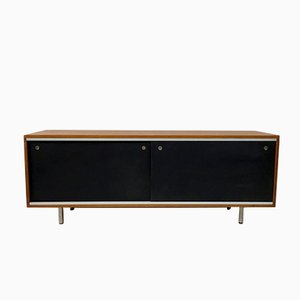
Sideboard von George Nelson für Herman Miller, 1960er

Pretzel Stuhl von George Nelson für Vitra, 2008
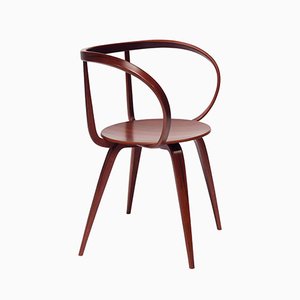
Mid-Century CSS Palisander Regalsystem von George Nelson für Herman Miller
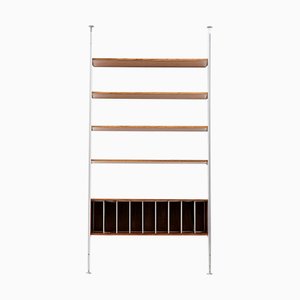
Sideboard von George Nelson für Hermann Miller, 1960er
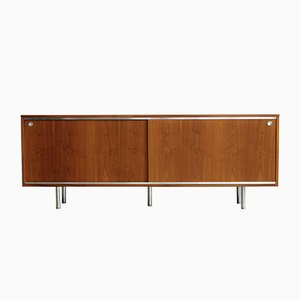
Mid-Century Wanduhr von George Nelson für Howard Miller
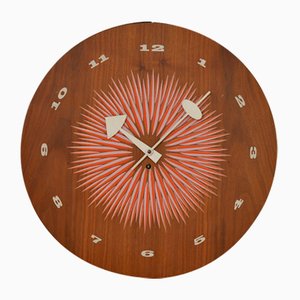
DAF Swag Leg Chair von George Nelson für Herman Miller
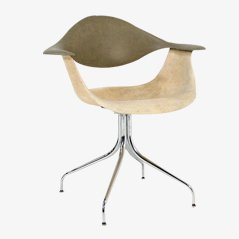
Mid Century Schreibtisch von George Nelson für Vitra
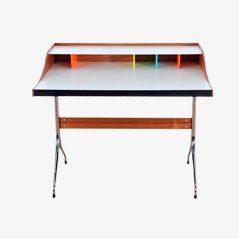
Ball Lampe von George Nelson für Modernica
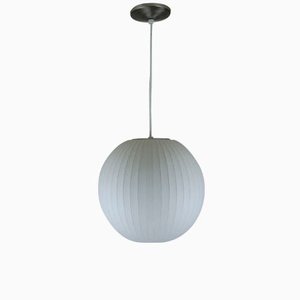
Mid-Century Sideboard aus Nussholz von George Nelson für Herman Miller

Cognacfarbenes modulares Ledersofa Set von George Nelson für Herman Miller, 1968

Modell Coconut Chair von George Nelson für Vitra
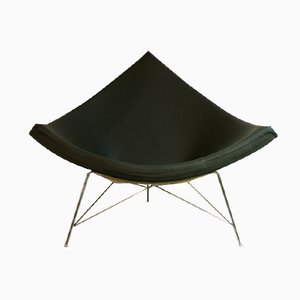














 1950s dining chair
© Jay Wen
1950s dining chair
© Jay Wen
 1954 Popular Mechanics cover
Courtesy of Hearst Communications
1954 Popular Mechanics cover
Courtesy of Hearst Communications
